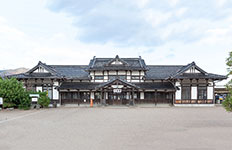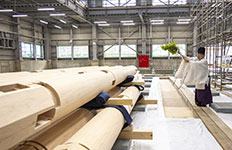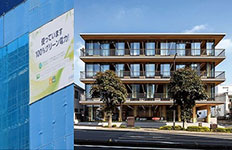Resource Recycling and Waste Reduction
Reducing the Volume of Construction By-products and Recycling Resources
Construction by-products generated during construction work include sand and other soil generated during construction and debris, metal, glass, and other materials generated during dismantling of a facility. These by-products are divided into recyclable resources and waste. Reducing the volume of such by-products and turning them into recycled resources is an important mission demanded of construction companies. At Shimizu, the entire company pursues 4R activities (Refuse, Reduce, Reuse, and Recycle) and we are working to comply strictly with laws and regulations and achieve even greater control over construction by-product generation and recycling resources to provide faithful craftsmanship of value to society.
Total Emissions Volume, Final Disposal Rate, and Total By-products Generated Per Square Meter
The New Kantas construction by-product data management system is used to aggregate annual performance in terms of construction by-products generated from job sites.
We have also set KPI for reducing the final disposal rate and reducing the total volume of construction by-products per base unit and are managing these goals.
Fiscal 2022 performance is as follows.
Our total emissions volume increased compared to the previous year. That was because of an improvement in the number of orders for construction we received. We achieved our target for the final disposal rate. Nevertheless, our total by-products generated per square meter exceeded our target due to the construction of a large accommodation facility with many interior materials.
- Total volume generated:
1.79 million tons (3% YoY)
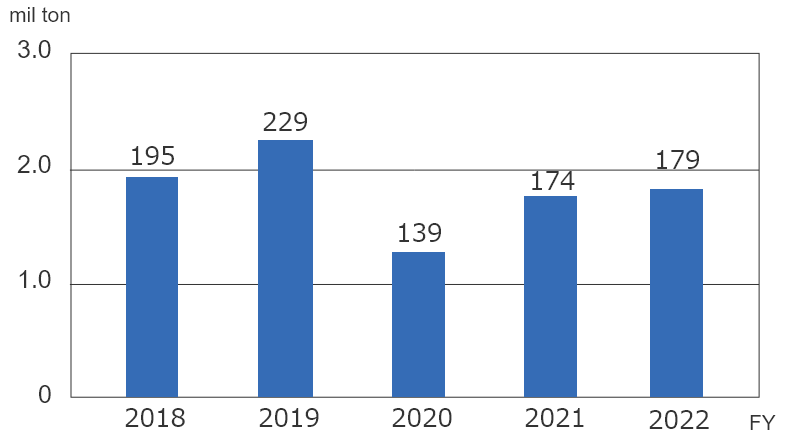
- Volume generated (excluding sludge):
1.17 million tons (-1% YoY) - Final disposal rate:
3.1% [Target: 4% or less]
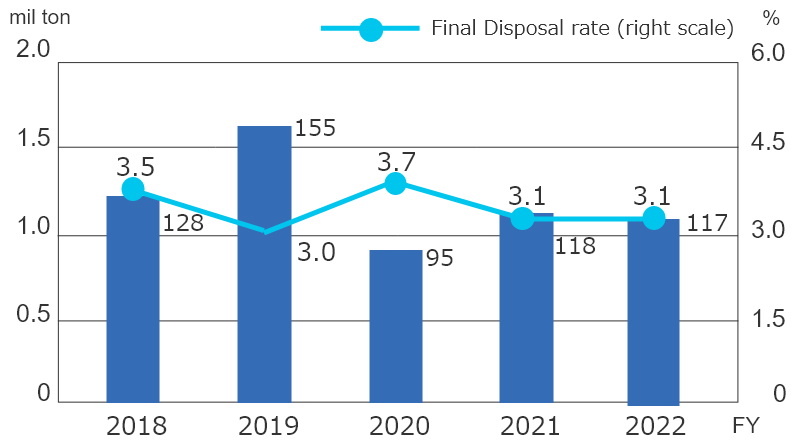
- Total by-products generated per square meter:
15.7 kg/m2[Target: 16kg/m2 or less]
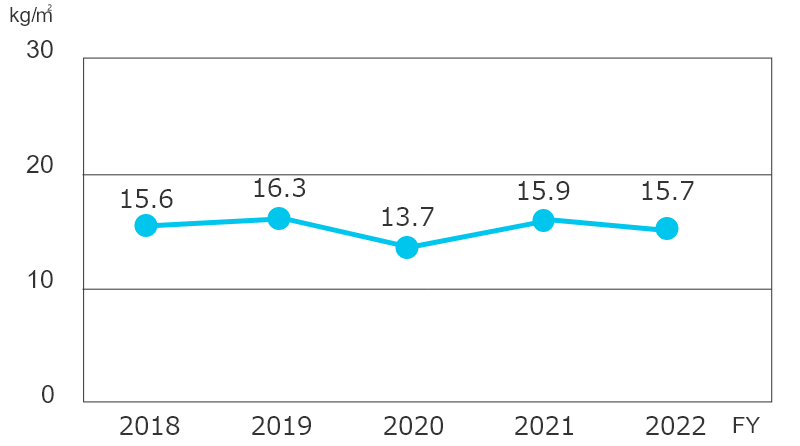
Initiatives in Resource Conservation and Improvement of Resource Efficiency at Job Sites (4R Activities)
We plan and pursue 4R activities and are working to use fewer resources, reduce the volume of by-products, and recycle resources. We also employ a system for predicting the volume of construction by-products that will be generated, and formulating and implementing a plan for effective reduction.
Shimizu also provides e-learning on proper processing of construction by-products, education in environmental risk management for the general managers and foremen of construction sites, and works to comply with laws and regulations at job sites, control the volume of by-products generated, and recycle resources.
- RefuseGoing package-less, precutting at the factory, and unitization
- ReduceUsing alternate formwork and industrialization at job sites to reduce use
- ReuseReusing repetitive formwork (eco formwork) and improved soil
- RecycleBringing materials to a recycling center so they can be reused, recycling by manufacturers (regional authorization, etc.)
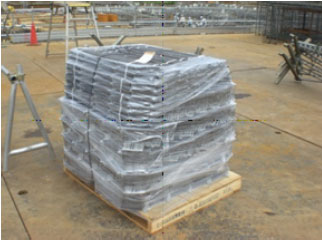
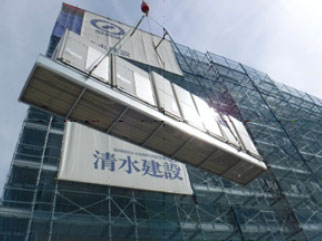
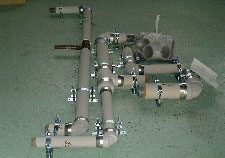
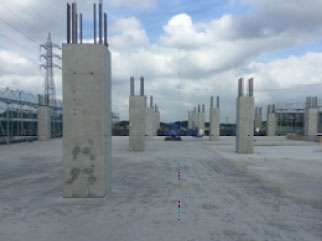
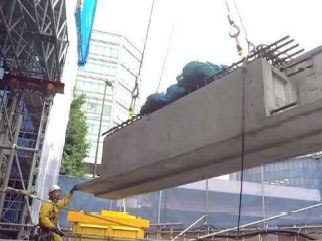
Conversion to PCa of Structures
Pursuing Proper Waste Processing and Electronic Manifests
At job sites, the waste generated during construction is listed item-by-item in a manifest. We verify that these items are delivered to processors via collection and transporters, and processed properly.
Shimizu has been pursuing the use of electronic manifests to ensure thorough processing of waste generated and in accordance with the national policy on moving to electronic documentation. We have managed nearly all construction via electronic manifests from fiscal 2017 onward, with the exception of special circumstances.

Encouraging Manufacturer Recycling Using a Region-wide Certification System
The Region-wide Certification System is a certification system where manufacturers that make exceptional achievements in managing the waste generated by their products such as through recycling are recognized. The manufacturer of a product obtains certification from the Minister of the Environment showing that they have cleared the strict standards of the Ministry of the Environment. This enables the public to know for certain that the discarded product will be processed properly and results in a higher rate of product recycling.
We carefully sort the drywall, urethane materials, and other by-products generated from construction at each construction project job site and are working to promoting product recycling by manufacturers through the Region-wide Certification System.
Conceptual flow diagram of the zero emission region-wide certification for drywall (photo)
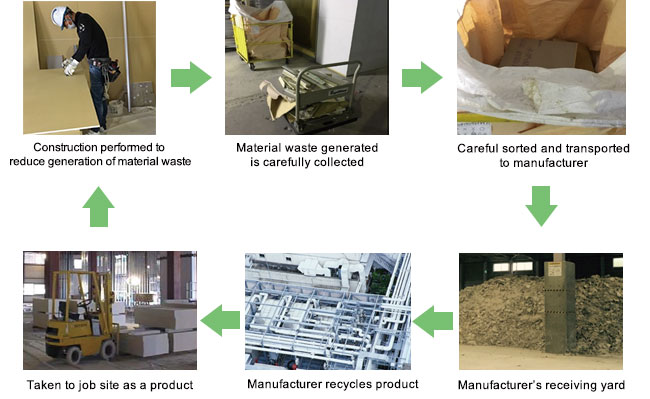
Description of Initiatives in Resource Conservation
Easily Removable Exhibition Hall for 100% Recycling
Construction of a Temporary Exhibition Hall on the East Side of Tokyo Big Sight (Tokyo Branch)
Shimizu diligently implemented 4R activities from the design and construction stage by preemptively considering the dismantling and removing of the building. In the construction stage, we applied various methods such as the steel pipe pile rotation and press fit method or our patented pile head ring socket construction method. We used precast concrete for the framework and unitized equipment during the construction stage, simplified packaging, and sorted waste, thereby substantially reducing generation of by-products. We also used recyclable materials for the exterior components and materials. We planned and implemented a 4D process using BIM, and employed environmentally friendly methods in the dismantling stage as well. Shimizu received a contributor's award from the Prime Minister for practicing the 3Rs (reduce, reuse, and recycle) in fiscal 2017 in this project.
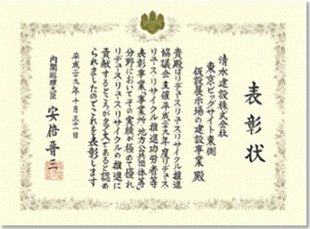
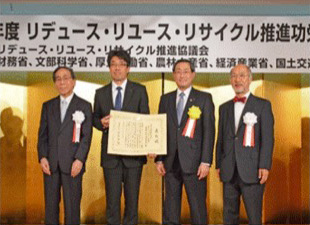
Pollution Prevention
Shimizu endeavors to properly manage and prevent environmental pollution as an important component of management.
Asbestos
We are responding reliably to prevent pollution in terms of the asbestos generated from our demolition and renovation work. In particular, we are the only major construction company to develop and deploy the certified ASP construction method for the removal of friable asbestos.
We generated 7.744 t of friable asbestos from our demolition and renovation work in FY2022.
We have developed various original technologies as individual technologies. These include a real-time measurement device (FS-1), a volume reduction device (Shico) and an anti-scattering agent (Astector). In addition, we are encouraging our employees to obtain various asbestos-related qualifications. The revised Ordinance on Prevention of Health Impairment due to Asbestos and Air Pollution Control Act to go into effect in October 2023 will make it obligatory for a qualified person to conduct an asbestos building material survey in demolition and renovation work. Accordingly, we are providing all-in-one and intensive in-house courses to obtain the qualifications to serve as investigators for buildings and asbestos. Together with the acquisition of qualifications, we are looking to improve our employees’ knowledge of asbestos building materials and to further improve their management capabilities.
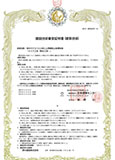
(Shimizu is the only major general contractor with this accreditation)
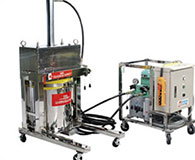
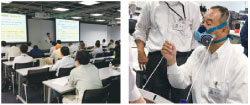
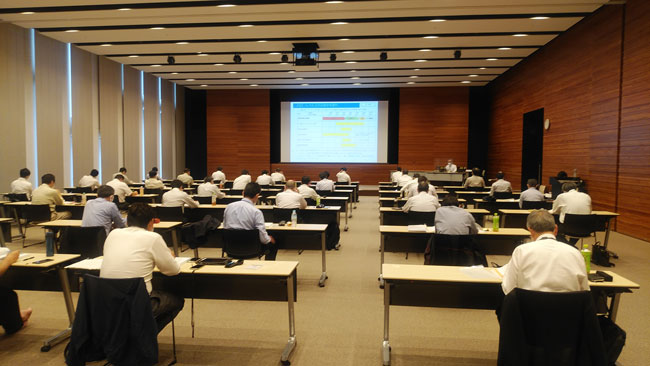
Dioxins, PCBs, CFCs, Halons, Noise and Vibration
Shimizu developed and is deploying the S-DA processing method to remove contamination from dioxins. Of the waste containing high concentrations of PCBs stored by Shimizu, we completed processing of PCB-contaminated machinery to render it harmless in fiscal 2019.
We held meetings with disposal contractors for the PCB contaminants we possess. We completed the detoxification process in FY2021.
We conducted inspections and surveys on the fluorocarbons of the equipment we manage in accordance with the revised fluorocarbon law, and confirmed proper management. Furthermore, through our internal environmental audits as constructors, we verify that our management of waste CFC emissions from special equipment used during building demolition is being managed properly.
Shimizu has also developed and uses the Cool Cut method to control the generation of noise, vibration, and dust during the demolition process.
Solution: Shimz Coolcut (Low Noise and Low Vibration) (only in Japanese)
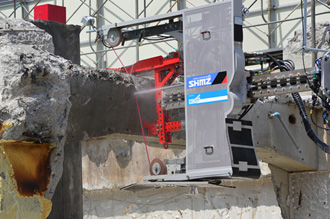
Soil Remediation
We prevent problems related to the soil environment and make efficient and effective efforts with many countermeasure technologies for purifying contaminated soil.

